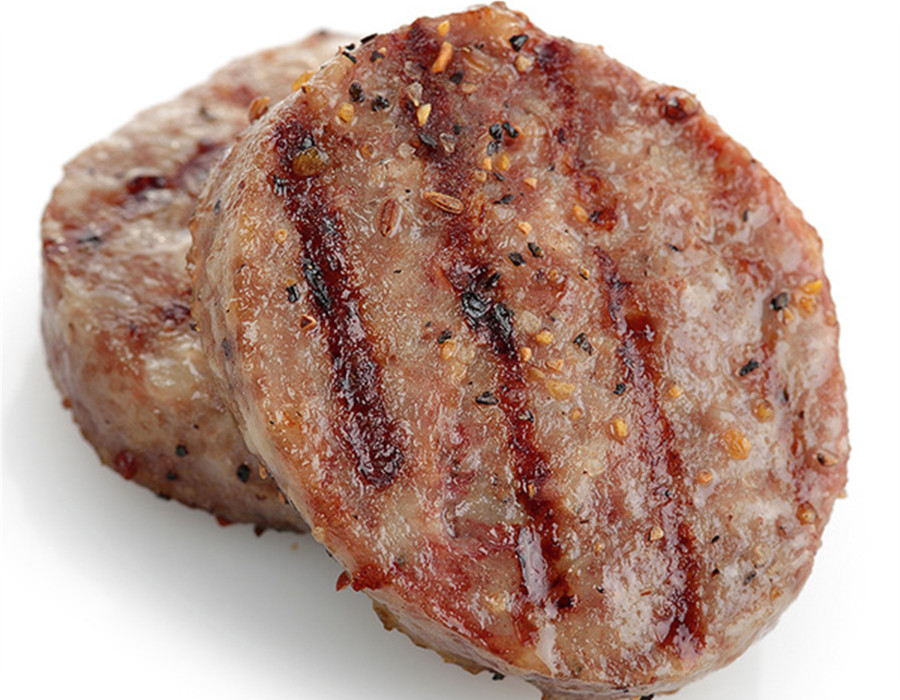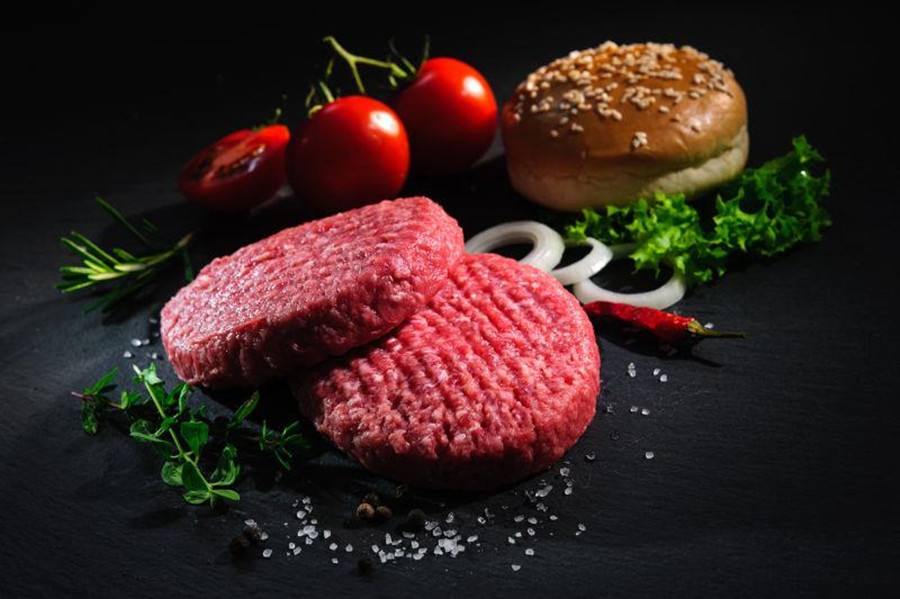Beef burger are beef products made from beef as raw material and processed through processes such as ground meat, marinating, and molding. As a new type of beef meat products, beef patties need to be cooked by frying, roasting, and deep-frying before eating.
1. Basic Processing Technology:
Thawing Raw Meat → Trimming → Ground Meat → Marinating → Mixing → Forming → Quick Freezing → Packaging → Final Product
2. Quality and Processing Characteristics:
The research on quality and processing characteristics is the main direction of current research on beef patties. There are 20 kinds of beef patties with different fat content (30%, 40%, 50%, 60%) and salt content (0.50%, 0.75%, 1.00%, 1.25%, 1.50%), of which the most popular among consumers Beef patties have a fat content of 40% and a salt content of 1.00%. Compared with beef patties in Ireland and the United Kingdom, the fat content is reduced by 20% and the salt content is reduced by 50%. Boglet et al. prepared protein-fortified beef patties and predicted a protein content of 28.7%. Bileke and others used glutinous rice flour as a functional food additive to partially replace corn starch, soy protein, and tripolyphosphate. The results showed that the cooking loss rate of beef patties in the glutinous rice flour group decreased, and the water retention rate and oil retention rate increased (P <0.05).
Through comparative experiments, it is concluded that with the increase of the addition of baking soda, vegetable oil, and meat tenderizer, the shear force of the beef patties gradually decreases and the tenderness increases; when the addition of vegetable oil exceeds 20%, the meat color of the beef patties becomes lighter and the texture It is loose and has poor oil retention during heating; the nutritional value of beef patties in the experimental group added with butter is significantly lower than that of the group added with 20% vegetable oil (unsaturated fatty acid content is 87.83%).

For the study of lipid oxidation and shelf life of beef patties during storage, studies have shown that the TBARs value and volatile basic nitrogen (TVB-N) content of beef patties with fat emulsion increase. Zhu Yingchun and other studies have shown that repeated freezing and thawing will cause the oxidation of beef myofibril protein, resulting in a decline in the quality of beef patties. Under different storage conditions, namely 4°C vacuum, 4°C non-vacuum, 25°C vacuum, and 25°C non-vacuum, Alejandre et al. evaluated the quality stability of beef patties based on indicators such as moisture content, hardness, color, and lipid oxidation rate. Show that the best quality under 4℃ vacuum condition.
3. Effects of Cooking:
Cooking methods and cooking utensils will affect the formation of heterocyclic amines in grilled beef patties, and it is easier to generate heterocyclic amines when cooking at high temperatures using iron pots. At 220°C, if the cooking time is too long, 2-amino-1-methyl-6-phenyl-imidazole[4,5-b]pyridine (PhIP) will be formed, and 9H-pyridine[4,3-b ]Indole (Norharman) and 2-amino-9H-pyridine[2,3-b]indole (AαC) will also be formed in a shorter cooking time, and the longer the cooking time, its content will increase significantly. Only the use of iron pan-frying, which is a cooking method that is in direct contact with high-temperature metal surfaces, can lead to the formation of a large number of heterocyclic amines. Qin Chuan detected 7 heterocyclic amines including PhIP and Norharman in roast beef patties. PhIP can induce a variety of cancers and cause great harm to human health.

In recent years, low-fat meat products have attracted more and more attention. Starch and protein powder are used as fat substitutes. Partially reducing the amount of fat has become a hot topic of discussion. Nutritionally fortified products are also increasing. In the process of production and storage, in order to avoid repeated freezing and thawing The resulting protein oxidation and the rate of change of physical and chemical properties are accelerated, and the production and storage process should be kept at low temperature and constant temperature.





